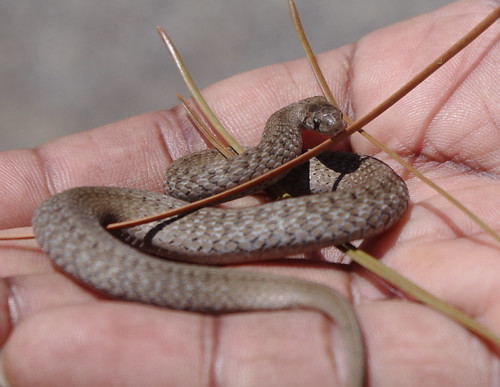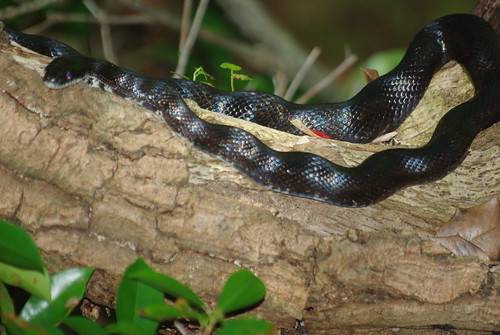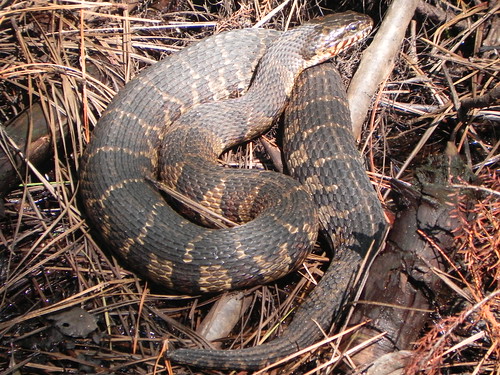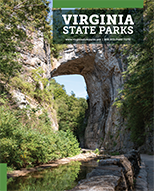Read Our Blogs
Don't Hate Me
Many people have a fear of snakes. Through ancient stories, these reptiles have been denounced as villains. Most of our serpentine creatures are non-venomous and shouldn't be feared by anyone, but treated with respect.

What? You are afraid of lil' ole' me?
For example, the Rough Green snake spends it's time in trees and bushes hunting insects and spiders. The attractive green color is far different from the various brown patterns on the venomous variety. Garter snakes are larger darker and with a stripe along the back. They feed on amphibians and fish as well as bugs and spiders. If the snake is green, it isn't mean. Black snakes are also non venomous. But, keep your eye on small pets. King snakes, Rat snakes, and Racers can grow from 64 to 80 inches long and can mistake a Chihuahua for a large rodent.

(Black) Rat Snakes are large, but non-venomous
Many other non-venomous species, such as the Brown snake, rarely get more than 20 inches and have a diet of crickets, slugs, and worms. Hog-nosed and Northern Water Snakes are often avoided and sometimes killed as they are mistaken for their more infamous neighbors. Before getting goose bumps, take a good look at the snake's head. If it is rounded with eyes round pupils and one set of nostrils, it is non-venomous.

The Northern Water Snake is often mistaken for the Cottonmouth below
The venomous species in Virginia belong to the Pit Viper family. Their heads are a broader, triangular shape. They have holes near the eyes called "pits" that are used to detect warm blooded birds and small mammals. Also, their eyes have a vertical pupil.

It is best to view venomous snakes from an observation deck
Though armed with venom, Copperheads, Cottonmouth (aka Water Moccasin), and Timber or Canebrake Rattlesnakes would rather strike at mice, rats, and other creatures on their menu. Often they detect humans before we see them and either hide or avoid our path. When hiking, it is best to stay on the trails. If there is a snake on the trail that can be readily and correctly identified as non-venomous, proceed. If the snake is or suspected as venomous, keep your distance and let them cross before continuing your hike.
As with all wildlife, it is best to have knowledge and a healthy respect for snakes. The best way not to get bitten is not to corner, threaten, or handle them. Even with non-venomous species, it is best to leave handling snakes to park rangers, master naturalist, and others with experience.
You'll find plenty of wildlife when you get outside at a Virginia State Park! Did you know that Virginia State Parks has 35 parks to choose from? Click here to view a map of all 35.
If you have read the article and have a question, please email nancy.heltman@dcr.virginia.gov.
Search for blogs
By Park
Categories
Cabins
Camping
Fishing
History and Culture
Other
Programs and Events
Trails
Volunteers
Water Fun
Archive
2025
2024
2023
2022
2021
2020
2019
2018
2017
2016
2015
2014
2012













